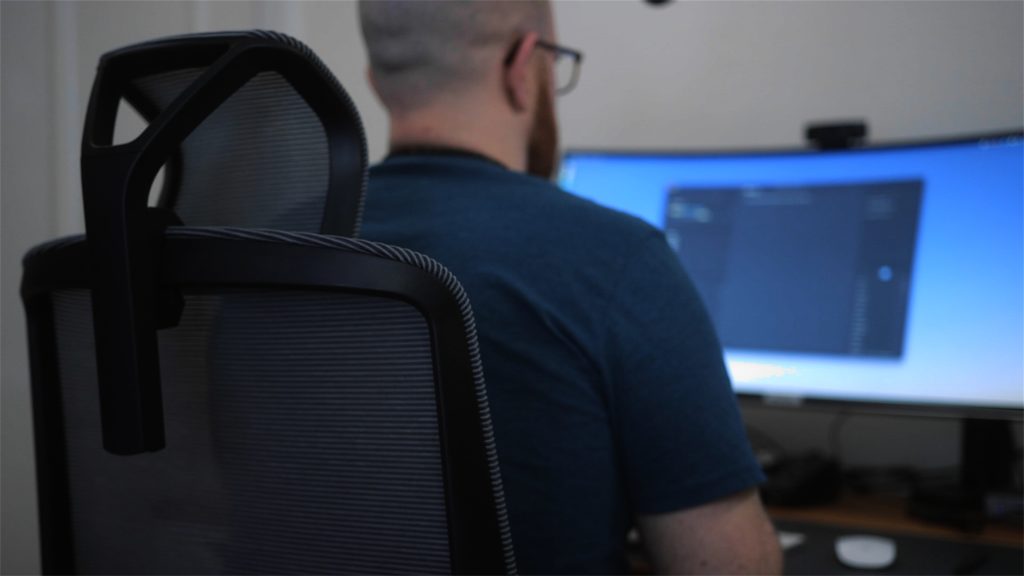
On the surface, there isn’t much to the popular plastic-tomato-kitchen-timer-based productivity system. Take a deeper look behind it’s simple facade, and you’ll find something quite profound. And perhaps most importantly, it’s something that is easy to miss when trying the system out for yourself.
What is the pomodoro technique?

The Pomodoro Technique uses a timer for tracking work sessions, and subsequent break sessions. Francesco Cirillo, the technique’s inventor, accomplished this by using his kitchen timer that looked like a tomato*, which led to the quirky name: tomato, or pomodoro in Italian.
I credit much of this method’s eventual popularity to the chance that Cirillo had a tomato timer on hand, not an egg* timer.How does pomodoro work?
The process has two stages, a work block and a break block—here’s a look at one simple round.
- Set timer for 25 minutes
- Work for 25 minutes
- Set timer for 5 minutes
- Take a 5-minute break
Beyond that, the times are entirely customizable. You can do any work/break split that helps your brain the most — and it requires a bit of experimentation.
I’m studying a relatively complex subject to prepare for a certificate program this fall, and have experimented with using around 200 of these work/break blocks (so far).
For efforts that require multiple elements of working memory held in place, longer work blocks are most effective for me. My favorite splits have been both 60/30 and 90/30.
With my current area of work, slightly longer breaks allow for both focus mode thinking and diffuse mode* thinking.
The truth is, when it comes to how long your work and break times are, there is no “right” or “wrong” way to do it. Just like most things, it’s all about trial and error. Try experimenting with what might work best for you — the type of work you’re doing will influence the results, too.
What’s important to note is that there is a way to do the pomodoro technique that largely defeats its beneficial outcomes. Interestingly enough it’s more related to the fun part of the technique — the break or reward. Speaking from experience, this is the most common reason the system doesn’t work for many people who try it.
Fortunately, there is a better way — and if it hasn’t worked well for you in the past, it’s worth another look.
The problem with pomodoro
Realistically, the biggest flaw of this system is the one I hear most commonly, and one I was guilty of myself. When the work timer ends, we don’t want to stop, and I can understand why. Especially for the attentionally-diverse brains* out there, deep focus is a golden gift — one that comes at no small cost. The last thing anyone would want to do after achieving that state is leave it, right?
*You know, the ones that decide to use words like attentionally.
If the point of the pomodoro technique is to achieve superhuman levels of focus and productivity, why should you stop once you get there? Why take a break and have to go through the effort of getting in the zone all over again… isn’t that missing the point?
No, it’s not missing the point — and to understand why that is, we have to go deeper… into ✨emotions✨.
The kid doesn’t trust you… yet
Imagine that you have a child. If you have a child above the age of five, imagine… your child. You’re spending the day together, going to the park, reading some books, and playing with Legos. After a fun day, it is time to clean up.
The problem is, no one likes cleaning up Legos—especially six-year-olds. So as the adult, you cut a deal.
Alright kid, if you spend 25 minutes cleaning up these Legos, we’ll go get an ice cream cone to celebrate.
You, the very much adult
The kid considers the deal, and shakes on it — who can turn down ice cream? You set a timer for 25 minutes, and the clean-up process begins. It takes a while to pull out the bins and find a groove, but the little one completes the task as agreed. Sure, there are still other things to clean up, but after 25 minutes a ton of progress is made.
Excited for ice cream, the kid feels a sense of satisfaction for completing the task, and is ready for the reward.
Oof, you know what—we’re on such a roll, let’s just keep cleaning. I don’t think we have time for ice cream today, anyway.
You, still the adult
Not only does this more or less ensure a meltdown, but it’s setting the expectation for future arrangements. In short, the kid can’t trust you — and trust takes a long time to rebuild. Adding to this predicament, kids don’t really know how to communicate that lack of trust. So when it comes time for the next clean-up, they procrastinate, complain, and drag their feet.
We’ve all seen it (and experienced it) before.
These seemingly insignificant violations of trust, when repeated over and over, build a pattern which starts to look a lot like avoidance. Procrastination. The things that, as adults, we beat ourselves up* about thus continuing the pattern.
*why am I the way that I am??
So about this kid…
Here’s the kicker, which may by now be obvious. That kid we were just talking about isn’t your kid or (anyone else’s kid for that matter). That kid, is you — your inner child — or as I like to refer to it, your ✨emotional self✨. It’s that feeling in your gut, the tightness in your chest, along with the full range of wonderful and horrible emotions that we experience as humans.
In my experience, one of the most impactful perspectives to take is this: all those human feelings we feel are just the inner child trying to communicate its current status.
In the same way that a kid doesn’t really know how to effectively communicate what they need at a young age, your inner child doesn’t either. It can’t say words, so it communicates through a complex language of emotions — which are a major piece of how (and why) we do* anything at all.
*or don’t do…
Just think, when you’re excited about something, how quickly do you jump up to take action? How hard do you work at it? When you’re dreading something, how about then? Both cases are just driven by emotions.
What about the adult?
In the ice cream story above, the adult is your big-old human brain. 🧠 The “if-we-don’t-get-this-done-we’re-a-failure” adult brain trying to keep the chaotic train of modern life on the tracks. And hopefully going vaguely in the right direction.
The managing expectations, calculating future consequences, if this happens I’ll die alone, adult brain. Luckily, the brain is the negotiator and deal-maker in the relationship. Constantly navigating the messages that the child is sending up through emotional messages passed through the nervous system.
Interpreting those messages isn’t as obvious as it seems* — it’s like speaking any language, it must be learned and practiced. But whether you think they are or not, they’re there — and they’re motivating a lot of the action (or inaction) in your life whether you like it or not.
*This is where things like yoga, meditation, and breathwork come into play. Slowing down enough to actually bring awareness to your body and the feelings it’s sending you.
As an adult in this world, if you have the awareness to see it (therapy can help uncover this), you are constantly navigating these two parts of what you most often refer to as ‘I’ (or, ‘you’ depending on how the voice in your head is reading this right now).
When the emotional self is ignored, dismissed, told to suck it up, and lied to, that pattern continues over years and years, getting deeper and deeper. All of a sudden, these things look more like a character flaw than a long-built habit. Eventually, the negative thought cycles as an adult reinforce the pattern more deeply. “Ugh, why am I so bad at focusing? Why can’t I just sit down and do this?”
One might literally feel incapable of doing certain things based on this feedback loop.
Thus, a new paradigm is needed. A self-compassionate practice with exposure therapy, taking small but consistent steps to rebuild the trust that was lost. It is but one small piece of the puzzle, but perhaps you see where I’m going with this.
The secret pomodoro sauce
Set a timer for 25 minutes, settle in, work on something until the timer goes off, then stop.
Get up, stretch, eat a snack, or heck, go get ice cream. Celebrate.
Most importantly, let go of the expectation that this is supposed to “work” immediately. It’s going to be uncomfortable because it’s a departure from what you’re used to — but that’s the entire point.
Start small, and work your way up to longer sessions over time if that’s what works best for you. If a work session runs over by a minute or two, that’s fine. If every now and then you’re on such a hot streak that it doesn’t make sense to stop right now, that’s fine, too*.
You’re allowed to be gentle with yourself! Really!
🧠 ➡️ 🤯
Take a moment to consider the possibility that if you don’t want to stop because it’s hard to get focused again, that not stopping until you’re burned out could likely be the reason that getting focused is hard in the first place.
The point of pomodoro isn’t to trick yourself into focusing on a task you didn’t want to do. It’s not about achieving a state of deep focus and then staying there for as long as possible.
It is about creating a trusting relationship with your child self over the long term. When done with this approach, it creates a new dynamic entirely. It is about managing negative emotions in a healthier way as an adult, listening to our bodies and our emotions while repairing a long-strained partnership.
In effect, it’s about working a system that allows you to heal your relationship with focus and work. It’s about reducing the effort required to start, focus, and get into that zone over the long-term. It’s not a quick fix, it’s healing self-work. That means you can use this system for all kinds of things — creative work, reading, etc. If it’s always a grind when you set the timer, that adds negative reinforcement to the system so mix it up!
“Healing work with a tomato timer? Come on, Anthony.” I can hear you thinking it. But it is just one of the many small ways we can begin to approach our lives and work with compassion and understanding. Without giving it to ourselves, there’s no way to truly understand how to give it to others. It has to start with you.
The ironic part about all of this, is that this method eventually becomes so much more wildly productive than any other approach. Not in the sense of “look at how much more I can get done now that…”, but in the way of, “look at how productive I am when I allow myself space throughout the day while listening to (and meeting) my emotional needs!”
Maybe it falls under the slow is smooth, smooth is fast principle, or something similar.
What I do know for sure is that strong negative emotions take a lot of energy to overcome. They’re incredibly draining, and can often throw multiple days askew. There is a dang good reason that parents of young children adhere to strict schedules of bedtime routines and naps for their kids. When those emotions are high to the point of fight-or-flight levels, mental recall declines, working memory suffers, and it takes even more energy to accomplish the tasks required.
Thus, the cycle continues and burnout is always around the corner.
Two steps back
There is an inherent “two steps back, one step forward” aspect to all of this. If you’re used to using adrenaline as focus motivation, it’s going to be hard to unwind. It’s, yes, going to actually slow you down at first. It’s going to take a lot of patience and effort to break the patterns of dependency on that style of work. But there is a better way — and one worth exploring.
While there are many ways to approach rebuilding self-trust, using a little plastic tomato timer is absolutely one worth exploring.



